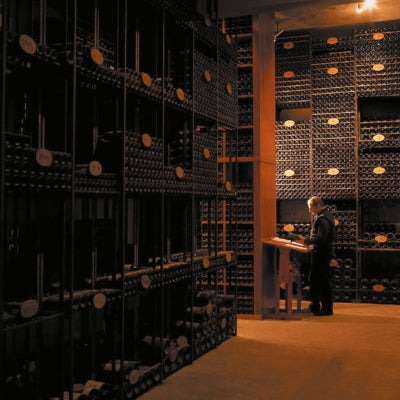
Collector’s Corner: The market for mature wines is booming
One of the foundational premises of wine collecting – buy wine when it’s young to secure the best price and store it until it reaches maturity to enjoy it – is increasingly coming under scrutiny. As fine wine prices have fallen from their Covid-inflated highs, mature vintages are often available at similar prices to new releases, and can present better value when quality and storage costs are considered.
Collectors are taking notice – and action. Many are favoring fully mature wines that can be enjoyed now, rather than locking up capital in wine futures. These ready-to-drink bottles come with built-in confidence: Their quality is confirmed by years of critical review, and their price history is well established. Auction results from 2025 reflect this shift. Exceptionally mature Bordeaux wines – some 30 to 50 years old – have become top performers, regularly commanding attention and strong bids.
How mature wines fit an uncertain economy
This shift is unfolding against a backdrop of global uncertainty. The past two years have seen political turbulence (including the re-election of President Trump and renewed tariff threats) combined with rising interest rates, persistent inflation, and mounting geopolitical tension. In this climate, long-term planning has become more challenging. Holding wines for 10 to 15 years ties up capital while leaving collectors exposed to unpredictable changes in taxes, trade policies, and economic cycles. At the same time, more mature vintages are re-entering the market at compelling price points. For collectors, they offer something far more tangible: immediate enjoyment, verified provenance, and a clearer sense of value.
The advantages of age
The appeal of mature wines goes far beyond price. Most importantly, they’re ready to drink – an immediate benefit for collectors who prioritize enjoyment over long-term storage. Their quality is easier to evaluate: Major wine critics have tracked their development, and their aging curve is well documented. Compare that to newly released wines, which rely on early barrel samples and preliminary scores, with no guarantee of how they will evolve in bottle. Mature wines also come with a pricing history. Auction results and secondary-market data give buyers a clear benchmark, making it easier to judge fair value and potential resale performance.
Mature wines hold their value
Recent performance metrics reinforce the growing preference for mature wines. Prices for older Bordeaux vintages have declined just 2.6% year-to-date, compared to a 5.6% drop for younger releases. Over the past five years, the contrast is even starker: Young Bordeaux has fallen nearly 10%, while classic, aged vintages have dipped only 3%. Having already corrected from their peak pricing, mature wines have shown far greater resilience than those still working through the market.
For collectors, the opportunity is broad. In Bordeaux, iconic vintages like 2000, 2005, and 2009 remain highly sought after, offering a proven mix of quality, historical performance, and strong demand. Beyond Bordeaux, there is growing interest in aged Champagne, early 2000s Super Tuscans, older vintages of Vega Sicilia Unico, and high-scoring Châteauneuf-du-Pape – all of which combine drinkability with market stability.
Best ready-to-drink wines to buy in 2025
Provenance matters in today’s market. Focus on wines from iconic producers and celebrated vintages – those with critical consensus and a strong price history. In Bordeaux, look to classics like 1990 Château Haut‑Brion, 2000 Château Mouton Rothschild, or 2009 Château Cheval Blanc. These wines have demonstrated stability and remain highly coveted at auction. Burgundy collectors might consider white wines with some bottle age such as 2000 Maison Leroy Meursault or 2008 Chevalier Montrachet from Domaine Leflaive.
For Champagne, mature vintage releases from Taittinger (1996, 1998, 2000), Dom Pérignon (1990, 1995, 1996) or Krug (1989, 1990, 1995) offer immediate drinking pleasure and are showing price stability. Italy’s Super Tuscans from 2000–2010 provide a compelling alternative, while Spain’s Vega Sicilia Unico remains a flagship for Ribera del Duero. Older bottles from California are also in the spotlight: Think Opus One 1992, Harlan Estate 1997, and Screaming Eagle 2001.
Diversification remains essential. While Bordeaux and Burgundy dominate traditional cellars, recent buying trends show a shift toward older wines from Champagne, California, and Tuscany.
In a climate of economic uncertainty, mature vintages offer a rare balance: Reduced risk, proven value, and the joy of drinking now. For many collectors in 2025, the message is clear – sometimes the best strategy is not to wait.
Want to read more? Take a look at some of our other blogs here:



